When it comes to getting around in the wild, you need a way to keep branches and vines out of your way. Carrying a pair of hedge clippers can be more than you need, as well as heavier. That’s why having the best survival machete at your side is a better option, as it not only helps to clear weeds, but it can also be used to take down prey and defend yourself from potential predators and attackers.
There is a wide variety of machetes in the market that differ in size and shape of the blade. They mostly serve the same purpose, but knowing the difference could help you find the one that is most comfortable in your hands. Just keep in mind that having a survival machete could mean the difference between life and death.
History of the machete
It is the most commonly used tool all over the world, from the rainforests of South America to the mountainous regions of Nepal. This blade has been put to multiple uses that you’ve probably never conceived of. It has been used to cut open coconuts, thresh tall grasses, and harvest bananas from trees. There’s really no limit on what these blades can do.
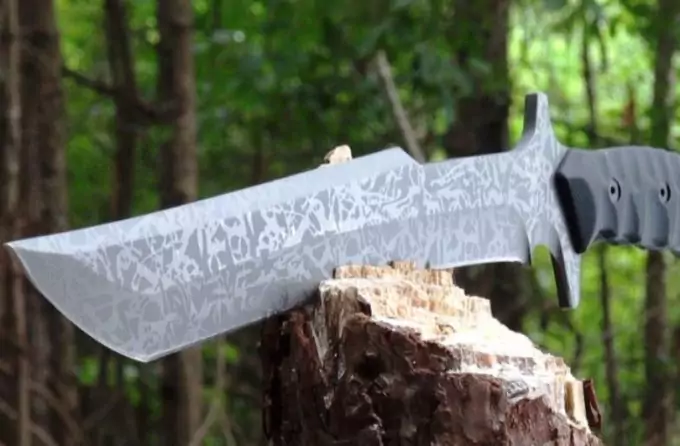
It is so widely used that there is no clear origin for this handy tool. Many believe that it was originally created like the Bowie knife, but it is more likely that it evolved from various designs from all over the world. It has been around since the 16th Century, and historians believe that it was inspired by the style of the falchion and the billhook. It had a history of being used in agriculture (harvesting crops such as corn, buckwheat, sugar cane, and millet), clearing dry brush, maintaining paths, the preparation of food, as a camping tool for creating shelters, and for self-defense. See our article reviews of the best survival machetes to give you more options.
Types of machetes
Because they have developed from a variety of sources, they differ from each other depending on the region of the world. Many of them differ from what you may consider a machete, but they still fall within the same family of survival machete. This list is not exhaustive, as these are only the most common.
The kukri machete, also known as the kukri, is native to Nepal and its neighboring countries. It’s generally about 16 inches long with a highly-curved blade that’s made for chopping. The point can be used for puncturing thick materials, while the area near the handle can handle delicate work like whittling. It is used as an everyday tool, mostly because the shape of the blade makes it quite versatile. It does not excel in any one task, but is great overall in all of them.
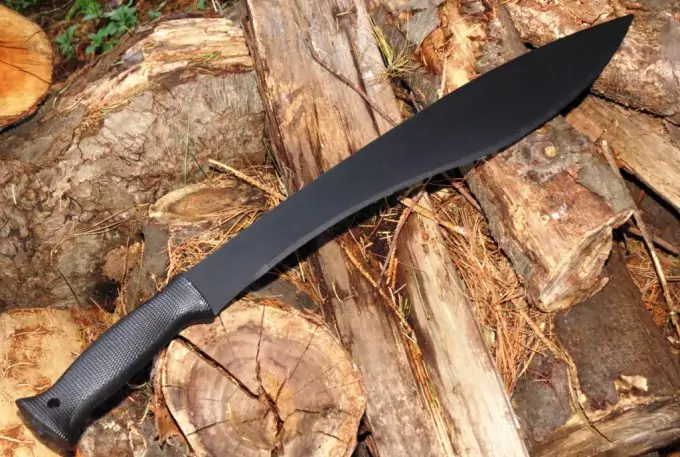
The bolo machete originates in the Philippines that has since spread to Indonesia, Cuba, and the United States. It’s a long blade that is made for chopping, and has its own variations within its type, such as the haras, garab, and sundang, just to name a few.
It works well as a camping tool and a farming implement, but can be quite large to carry around, especially if you’re trying to minimize on space.
The parang is quite large, and can be as long as 24 inches. It has a wide end to prevent it slipping from the hand. Because of the length of the blade, it typically has three edges. The top edge is designed for skinning; the middle for chopping, and the bottom for whittling. This makes this kind of machete highly functional for all the different tasks you may need to complete on your ventures into the wilderness.
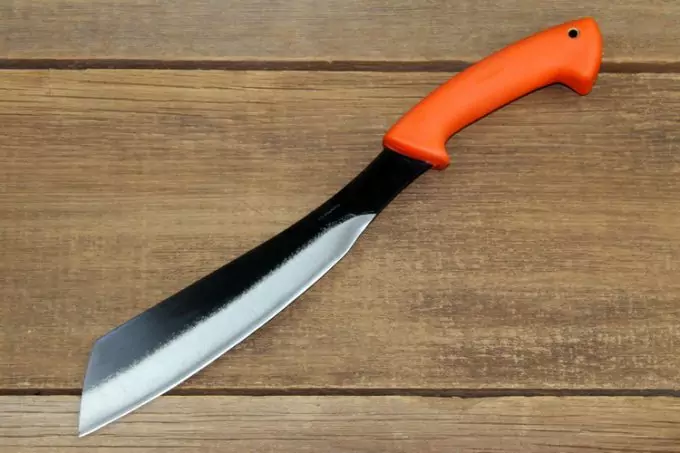
The golok is Indonesian in origin, and has sometimes been used interchangeably with the parang of Malaysia. They are much shorter and heavier, and are considered a symbol of masculinity in Indonesian cultures. While the parangs are meant to be used for vegetation, the golok is meant for chopping heavier bushes and branches, as well as for self-defense.
The barong resembles a wide leaf, setting it apart from the various machetes that exist in the market. They are more swords than machetes, but tend to be a bit long. They are mostly used for combat and Filipino martial arts. Despite this, they can still be used for other purposes that you would use any machete for.
The panga comes from Africa, and is similar in style to the bolo. The only difference is that the upswept part of the blade near the tip is sharpened to a point. They’re heftier with a deeper belly and a slight curve. They are good for slicing and chopping thick wood and vegetation, while the sharpened point gives it good piercing capabilities. It’s also quite bulky, and does lack a spear point that would make puncturing easy.

The latin or bush machete is considered the traditional version of the blade that you may be used to seeing. It has a long blade with little to no curve on its body until the very tip of the blade. These kinds have no specialty in mind, and are considered general purpose tools. They come in different blade lengths, and are very evenly weighted so that you’ll have very little difficulty swinging one around. It’s not great for heavy chopping, but it can take care of most of your tasks.
The tapanga machete is different from the others, in that it has a blunt blade. It’s used most widely in African countries and the Caribbean. It has a slightly backswept chisel-like tip, and has three lines grooves in the blade to help it with its chopping function. The added front weight to the blade also improves upon this capability.
The Bowie machete is the newest addition to the family, and is American in origin. It’s a cross between a Bowie knife and a machete, and is at least 10 inches or longer.
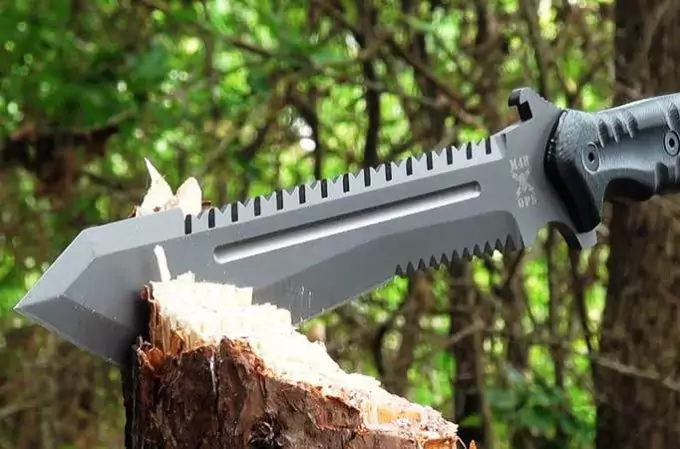
It was created to be more versatile, with its clip-point and chopping capabilities, a must-have for any campsite.
To learn more on how to choose from different types of machetes for your needs, read our article on this topic.
Common features of machetes
These different machetes all have a few features in common that provide a lot of functionality to each blade. Some may have all of these features, while others may have a mix to give them a particular function.
- Sawback: some machetes will have teeth on the backside of the blade, and this is to saw through extremely tough vegetation. When not sawing, the teeth can be used to pull vegetation out of your way, or to drag brush behind you, which can be useful if you want to bring kindling back to your campsite. This feature is more of a matter of preference, depending on what you see yourself doing on your vacation away from home.
- Lanyard hole: there comes a time when you’re going to need both hands, and you don’t want to risk putting your blade down. But don’t be confused about the term lanyard; it’s not meant to wear around your neck. Rather, it’s to attach a strap that you wear around your wrist so that the blade doesn’t fly out of your hands when you swing it. If you’ve never used a machete before, it may take some getting used to have a strap around your wrist, but it could be beneficial, especially if you’ve got sweaty palms.
- Hook: this has a sharpened hook inside that is used for slicing through tough vines and branches, as well as grabbing and pulling brush out of your way or behind you. It was originally pioneered on the Woodman’s Pal, and other machete manufacturers have started including it in some of their models.
- Front/rear quillon: these are designed to provide added security to the grip, and it a protrusion between the blade and the handle that prevents from hand from sliding onto the blade, resulting in injuries. Rear quillons are added at the end of the handle to prevent it slipping from one’s grip.
- Knuckleguard: it serves as a means of protecting the hand while engaged in combat with an adversary, as well as from stray branches while you’re swinging. Many have stated that although this can be beneficial, it does hinder how the blade can be held, decreasing its versatility.
- Fuller: this is what is known as blood grooves, and is a groove near the spine of the blade that was designed to reduce the overall weight by displacing the steel. They can be side by side, and the feature is most often found on kukris.
How to choose a machete
Now that you know what to look for in your machetes, it’s a matter of personal preference on what kind you get. Do you want the most expensive? The most versatile? The easiest to maintain? These are all questions you should ask yourself before you go out and buy the first survival machete you find.
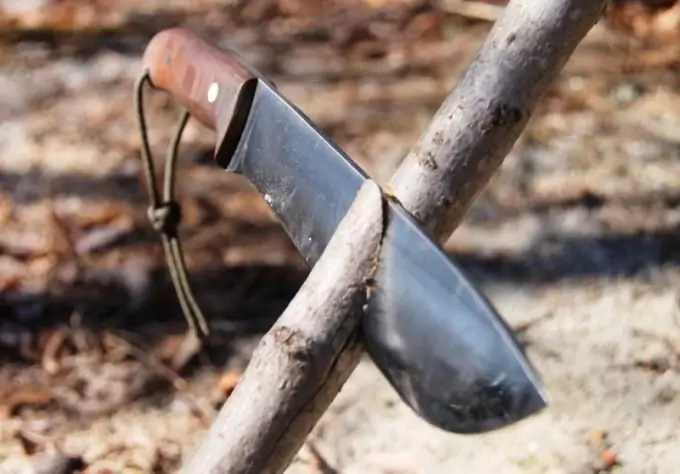
When it comes to affordability, machetes are relatively inexpensive. Don’t settle for the cheapest one that you can find. This is a reflection of the manufacturing process that has gone into making it. Usually, the top machetes in the market can cost between $20 and $40 and come with sheathe. Premium models are a lot more expensive and come with a lot more features that will increase its functionality and make it easier for you to use. You’ll definitely get more durability in relation to the price you pay.
Maintenance is key when you’re looking for a blade you want to keep for a long time. You want a blade that is not only easy to clean, but won’t start rusting at the first sign of moisture. High carbon steel is more durable than stainless steel, but will fetch a higher price. However, high carbon steel makes sharpening more difficult when it starts to lose its edge. Regardless of the material you go for, your machete should be wiped down with oil after each use in order to keep rust away.
Swinging around a machete can get tiring, and you don’t want to wreck your hands doing it. Having a good handle can make all the difference in the world. The best survival machetes will have a comfortable handle that won’t slip from you grip as you swing. Plastic handles are very easy to maintain, but they do tend to get a bit slippery from sweat. But they’re more versatile in that you can use parachute cord, leather or duct tape to wrap around the handle to improve the grip, as you see fit.
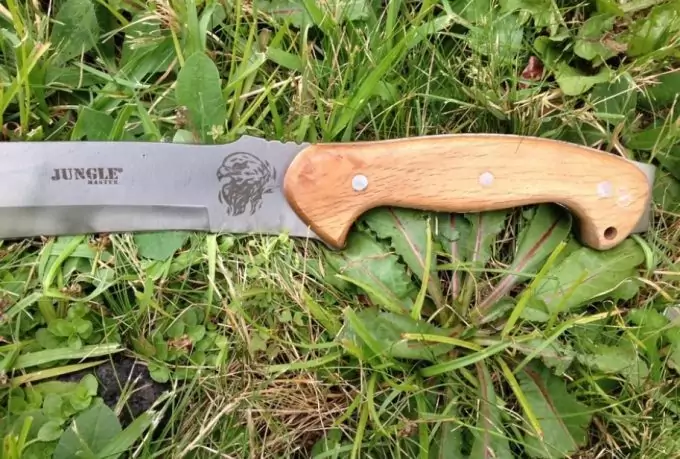
Plastic does tend to crack over time, however, so you should be careful. Shatterproof polymer is another alternative material used on handles, but the best models tend to use rubber, composite or hardwood that allow for a snug fit. Woods such as rosewood and oak do well under stress, and are still light enough for you to wield without extra strain. A strong pommel at the end of the handle provides the added effectiveness of being able to hammer in nails without having to tote another tool around with you.
A full tang is better than a half/partial tang, as it means it’s more durable as you use it. The tang is the portion of the blade that extends into the grip, and ensures that your machete remains one solid piece while you use it. Less tang means that it’s easier to break and the blade can go flying in any direction.
As for versatility, it all depends on the kinds of activities you’re going to be engaging in. Choose a machete that fulfills more than one function so that you have a multipurpose tool to keep you safe. This also minimizes on the number of extra tools you’ll have to bring with you, allowing you to maximize on the space you have and add more supplies that you really need. The size of the blade will also play a factor in this as well, so be sure to find a middle ground with a small blade that is also multi-functional.
Best machetes for survival to buy
Now that you know what’s out there and what to look for, these are some of the top rated survival machetes on the market. They can give you a good idea on what the best is, and you can scale back or consider other features that you feel will better enhance your experience when it comes to using your machete while you’re camping.
Kershaw Machete/Camp Knife (18-Inch)
This machete is made from 65Mn high carbon steel that has a black powder coat for a sleek and low-profile look. This coating also prevents corrosion from the elements, so you won’t have to worry as much about rust. Despite the thickness of the blade, it is surprisingly light, especially with a fuller that runs at least 60% of the length of the blade.
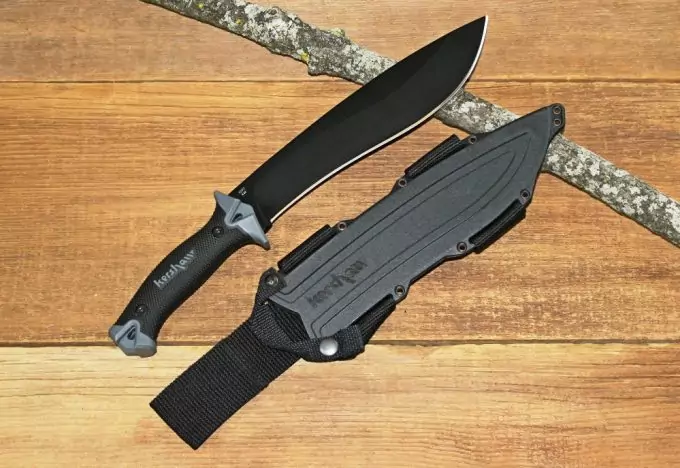
It’s perfect for slicing, scraping, cutting, slashing and batoning, as well as many other chores that may fall into your lap while you’re camping. The Sure-Grip rubber handle helps you maintain a grip on the machete while you put it to work, and the full tang is guaranteed to keep your blade from breaking too easily.
The hard plastic sheathe will also help to keep your blade protected from the elements, and the nylon straps can be easily manipulated by either hand, making it a perfect gift for both right- and left-handed people. Though meant for general camping, it can be used for hunting and surviving in the wild as well. One downside to this machete is that it doesn’t do very well against heavy duty chopping and wood cutting, and that the handle could be extended to be used with two hands, given the size of the blade.
Like this product? Then you can buy it on Amazon.
Gerber Bear Grylls Parang Machete
Despite the fact that this knife was designed with low production costs in mind, the value and functionality adds more to it than the price you’ll pay for it. It comes with an affordable sheathe that serves its purpose, but where this machete really shines is how it’s used. It has great balance when it comes to chopping light vegetation; the blade is quite thin and only 13.5 inches long, so this isn’t a heavy duty knife you can use for chopping big pieces of wood.
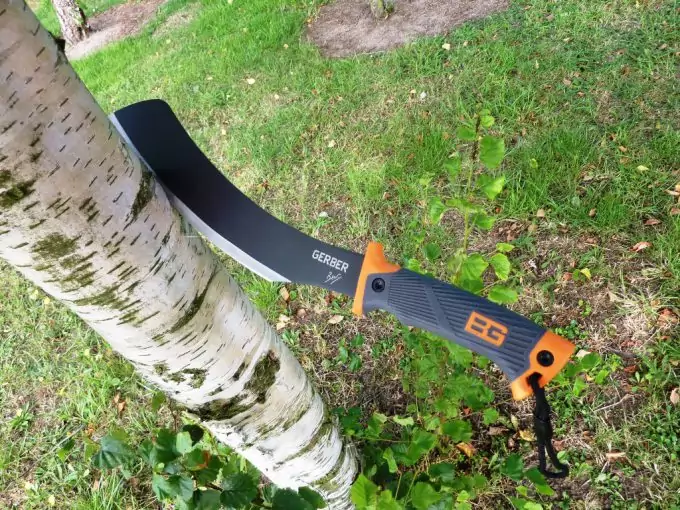
The handle is comfortable, but special tape or wrappings can be added to it for your specific level of comfort. One drawback is that against thicker brush and pieces of wood, the blade will get stuck. This can be avoided by using it on smaller brush or using sharper motions to give you cleaner cuts.
[the_ad_placement id=”in-text-2-type-a”]The blade itself is very light so you won’t strain your muscles too much. Definitely a machete you should consider adding to your repertoire.
If you like this product you can find and purchase it on Amazon.
Ontario 6145 Military Machete
Also known as a military machete, the Ontario 6145 is one of the higher quality machetes you’ll find on the market. It sports an 18 inch blade, and weight a little over a pound, adding a bit of heft to each swing in order to get through those tougher areas of brush and overgrowth. It uses 1095 high carbon steel in the construction of the blade that stays sharp even through the roughest treatment.
It sports a full tang with a plastic handle, and even has a hole for a lanyard so that you won’t lose your blade if your hand slips. Athletic tape or leather cord can be used on the handle to make it more comfortable to grip, however. This is a machete that is on the heavier side of the spectrum, so that should be taken into account when considering the kind of blade you want to take with you, as well as how much weight you can carry if you decide to backpack. For the cost, however, this is a blade that will stand the tests of time.
If you like this product you can find and check its price on Amazon.
Gerber Gator Bolo Machete
This blade takes on the classic shape of a bolo machete, but has all of the modern conveniences of technology behind it. It has an ergonomic handle that makes it easier to grip and is also slip-proof, and sports a full tang that keeps the blade resilient no matter how it is put to the test.
It can make short work of everything from tall grass to even small tree limbs. This is due to the added weight near the front of the blade that makes it easier for you to swing and follow through, no matter what material you’re cutting.
It’s made with 1050 steel and is 15.5 inches long, allowing you a lot to clear the brush with. It comes with a nylon sheathe that keeps the blade protected when it’s not in use.
Like this amazing product? Then you can buy it from Amazon.
CFK Cutlery Company Curved Machete with Leather Sheath & Fire Start Rod Set
This simple machete is actually quite well made, and even sports a wooden handle. It weighs roughly one pound and the blade is roughly 11 1/8 inches long. That’s a lot of blade to work with, and you’ll feel good doing it too. It comes with sheathe made from buffalo hide saddle leather, and even has an extra pocket for the fire starter rod that it comes with.
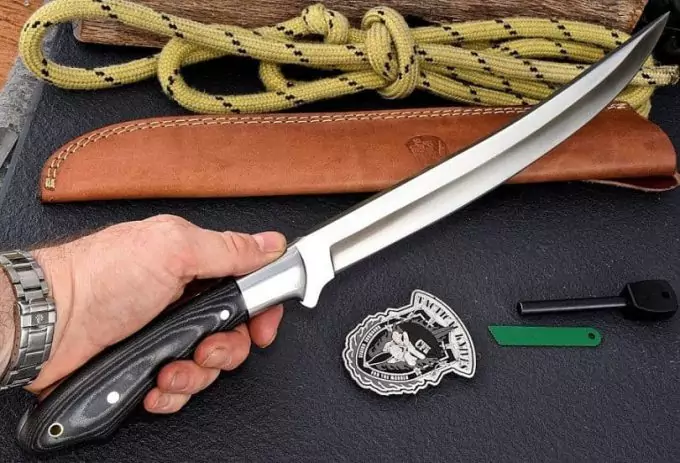
So not only can you cut down brush easily, but you can also get it going in no time without having to worry about matches. The blade is made from vacuum hardened 59 HRC steel, so it’s designed to last a long time. The handle does sport a lanyard hole so that you can keep your blade in your grip while you’re swinging.
Like this amazing product? Then you can check its price here.
When it comes to finding a blade that is right for your needs, it’s always best to go to an outdoor sporting goods store in order to try them out for yourself. Feeling the weight of a machete in your hand can make all the difference, as you’ll have to feel the weight and the grip to find what is most comfortable.
Remember that you’re going to be doing a lot of chopping, depending on where you’re going, so you have to find something that won’t leave your hand all blistered and your shoulder tired from all the tasks you’ll be accomplishing. Also be sure to clean and oil your blade after each use to ensure that it doesn’t contract rust, or else all that money you spent on getting a great survival machete would have been for nothing.
Learn more about the other kinds of blades and equipment by reading our reviews of the top survival gear today.



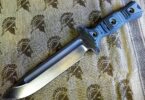
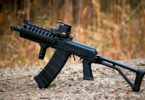

How do I carry a machete with me? Whenever I attach it to a belt it feels so awkward and makes moving a pain. Yet, carrying it in a backpack kinda defeats the purpose of having it readily available.
use a self-made cross-belt
My first choice is always going to be a thick and heavy Kukri machete. It is almost invincible when you are walking through a dense jungle, clearing your way out of dense bushes and branches. Also, you can use it for self-defense. The most important point to highlight is that it can be carried with comfort.
Every machete serves a different purpose. You should buy one according to your needs. Although, I would say that the Kukri machete has an edge over others as it has inheritance of almost all other machetes.
We appreciate your opinion, thank you.